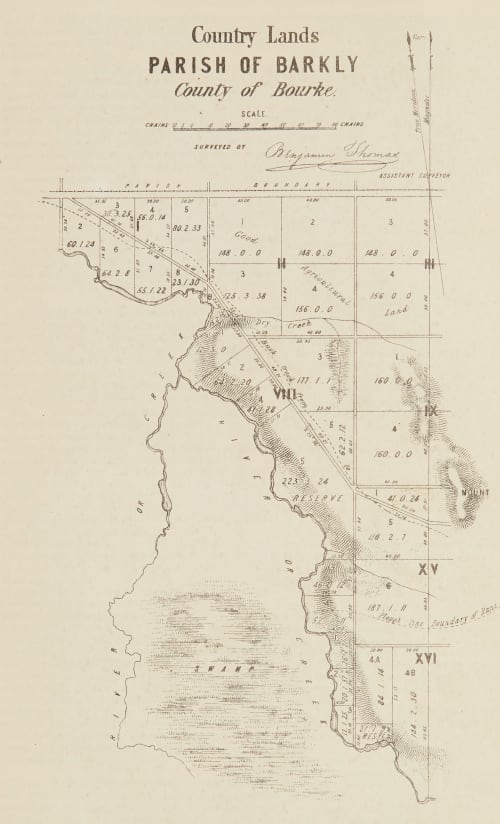
Title
Country Lands. Parish of Barkly. County of BourkeArtist
Osborne, J. W.Publication
The Journal of the Photographic Society of LondonDate
1860Process
Photo-lithographImage Size
16 x 10 cm
Australian John Walter Osborne invented a photolithography ‘in line’ process using transfer paper in 1859. Horgan (Inland Printer, 1900) writes: Osborne’s process consisted in coating a linen paper with a mixture of gelatin, albumen and bichromate of potash. After this paper was exposed to the action of light under a negative its surface was coated with lithographic ink. Then the ink coated paper was floated, back down, on boiling water, the heat from which coagulated the albumen and kept the gelatin un-hardened by light from dissolving away in later operations. The ink-coated surface was now rubbed over with a soft wet sponge, when the ink would adhere only to the portions of the gelatino-albumen surface which had been hardened by light, thus making a perfect lithographic transfer. [1]
The discovery of gold in Australia in 1851 led to a host of new settlers arriving in the newly created colony of Victoria. By the mid-50’s the authorities could not keep up with the demand for surveyed land, nor with the printed maps required for land sales when subdivisions were announced. Engravers and lithographers were stretched to the limit and the crisis had administrative consequences that were instrumental in making Osborne’s invention a priority.
Reproduced / Exhibited
Smithsonion ID NUMBER GA.03948
References
[1] Hanson, David Checklist of photomechanical processes and printing 1825-1910, 2017

